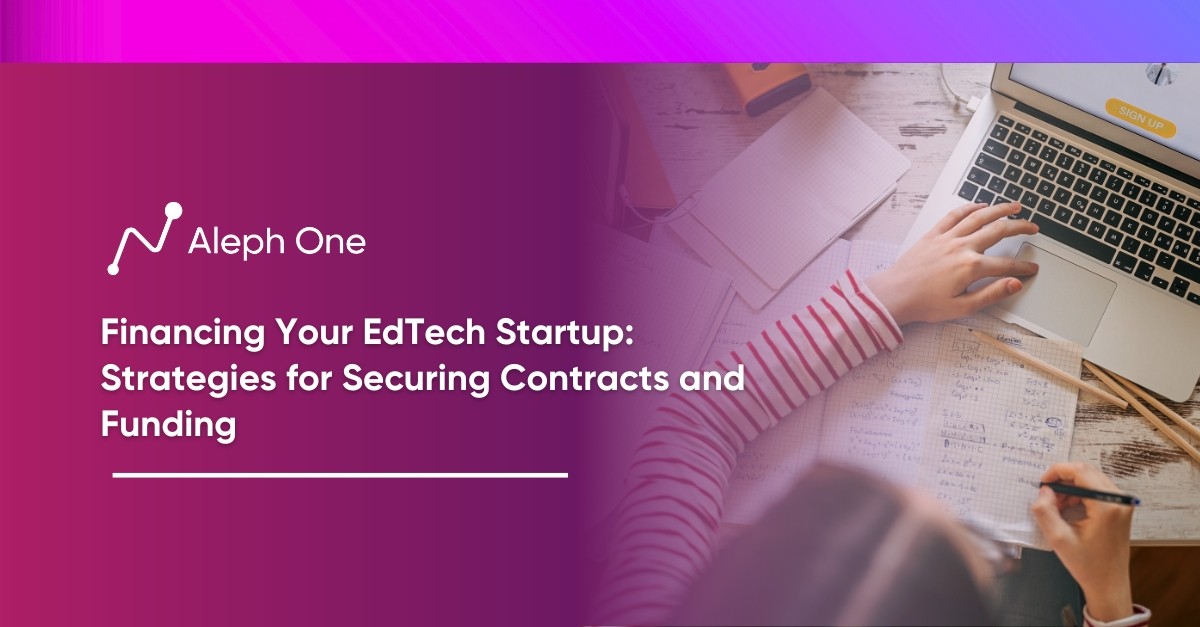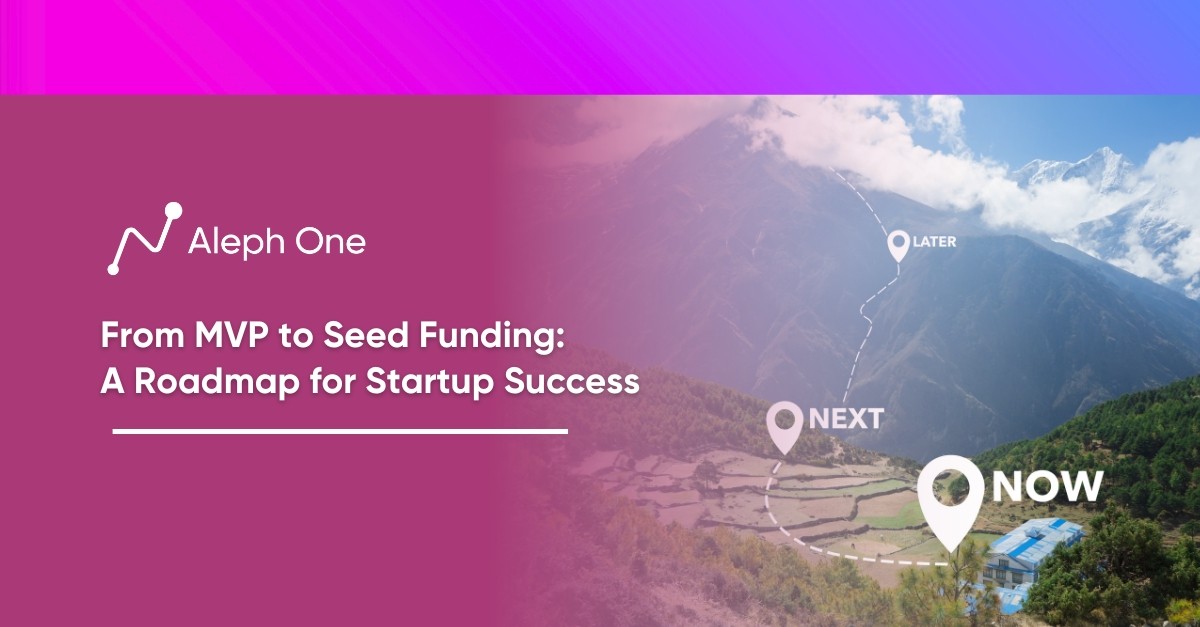Let’s work together to build something amazing. Share your project details and our team will reply to figure out the next steps to your success.

In the rapidly evolving landscape of education technology, securing adequate funding and contracts is essential for the success and growth of EdTech startups. The surge in interest from investors and the growing market demand for innovative learning solutions have created exciting opportunities in the EdTech space. With funding for EdTech startups reaching new heights and notable success stories of transformative companies, founders have a favorable environment to make a compelling investment case. This article explores the strategies and approaches that can help EdTech entrepreneurs secure the necessary contracts and funding to propel their startups forward. From understanding the driving forces behind the surge in EdTech investment to crafting a persuasive pitch, leveraging blended finance models, and harnessing the power of accelerators and crowdfunding campaigns, this comprehensive guide aims to equip aspiring EdTech founders with the tools and knowledge to navigate the funding landscape and make a meaningful impact on the future of education technology.

The New Wave of EdTech Funding: Why Investors are Bullish on Education Technology
Education technology, or EdTech, is attracting significant interest from investors. According to recent estimates, funding for EdTech startups reached $16.3 billion in 2018, up from just $500 million in 2010. This surge in funding reflects several influential trends driving opportunity in the EdTech space.
Growing Skills Gap
There is a growing skills gap in the economy. Many jobs require digital and technical skills, but students often need access to education in these areas. EdTech solutions are drawing investment. Guild Education, which offers education and upskilling programs through employers, raised $157 million in 2019.
Demand for Online and Lifelong Learning Options
Second, the demand for online and lifelong learning options is rising. Students want greater flexibility, affordability, and access. Investors are backing startups enabling digital learning, education platforms, and alternative credentialing. For instance, Udacity, which offers digital courses in tech and business, raised $105 million in 2019 to expand its nano-degree programs.
Strong Returns on Investment
Finally, EdTech has demonstrated strong returns on investment. Exits, including LinkedIn’s acquisition of Lynda.com for $1.5 billion, Pluralsight’s IPO, and Duolingo’s $700 million valuation, show the opportunity for scale and high returns. This is attracting more venture capital and mainstream institutional funding into the space.
Duolingo, Coursera, Kahoot, Chegg
Major deals in recent years include Duolingo’s $138 million round in 2019, Coursera’s $103 million in 2018, and Udemy’s $113 million in 2019. Several large education companies, including Chegg, 2U, and Kahoot, have also had successful public offerings in the past two years, demonstrating the growing maturity of EdTech.
Funding for education technology is surging due to a skills gap in the economy, increasing demand for digital learning, and a track record of solid returns on investment. For founders of EdTech startups, now is an opportune time to make a case for investment in solutions that can positively impact the future of learning.
How to Pitch EdTech Investors: Crafting Your Compelling Story
To raise funding for your EdTech startup, you must develop a persuasive pitch conveying your vision to investors. Your pitch should tell a compelling story highlighting your business’s key elements, including your target customers, competitive advantage, business model, go-to-market strategy, and potential for returns.
Target Customers and Paint Points
Start by identifying your target customers and their key pain points. Are you targeting students, teachers, schools, or administrators? Discuss their challenges and needs, and how your solution uniquely solves them. Explain your competitive advantage, whether proprietary technology, data-driven insights, or an innovative learning model.
Business Model
Outline your business model in detail. Discuss how you acquire customers, your pricing model, key partnerships, and how you generate revenue. Explain your go-to-market strategy, including building awareness, sales, and customer success. Provide projections for customer growth, revenue, and potential profits over the next 3-5 years.
Convey Your Passion
Remember to convey your passion for the problem you are solving. EdTech investors want to fund startups that are driven by a purpose and mission to improve education, not just make money. Share your vision for how you will transform learning and improve outcomes. Discuss the real-world impact you aim to have on students and teachers.
Storytelling
Use storytelling to bring your pitch to life. Share stories of students or teachers whose lives have been impacted by your solution. Discuss how you developed your idea based on your experience in education. Make an emotional connection to show why your startup matters.
Key Milestones
Highlight any key milestones or traction you have achieved to date. If you have launched a pilot, discuss results and testimonials from early customers. Talk about what you have learned and how you will apply it to fuel growth.
Be prepared for tough questions from investors about your strategy and financial projections. But don’t get discouraged if investors don’t immediately get on board. Connecting with the right investors is a process that can take time. With a compelling pitch and story, you can find the perfect partners to help turn your vision into reality.
The Rise of Blended Finance: How to Secure Both Grants and Equity Funding
Leading EdTech startups today are raising funding through a blend of philanthropic grants, venture capital, and equity investments. This “blended finance” model provides several benefits. Grants and impact investments from foundations allow you to fund research and development without giving up ownership. Venture capital provides larger sums to fuel growth. And equity crowdfunding engages your community while raising smaller amounts.
Challenges of Blended Finance
However, there are challenges to raising blended finance. Startup grants often require diligent reporting and may restrict how funds are used. Venture capital typically means sacrificing some control and ownership. And not all types of investors will invest jointly in a single startup.
How to Raise Blended Finance
To raise blended finance, you must first determine which funding types match your needs and values. Then, identify potential investors and funders, focusing on those open to blended models. Be transparent about all funding sources to avoid confusion and conflict later on. You may need to adjust financial models and terms to satisfy different parties.
Anthropic – Grants and VC Funding
For example, the education technology startup Anthropic raised $4.3 million in funding led by VC firm Lux Capital. But Anthropic also received grants from the Open Philanthropy Project and the AI Safety Fund to support their AI safety research. The startup raised venture capital by pitching their commercial potential while grants funded basic research, with both investors aware and supportive of the blended model.
ClassDojo – Kickstarter and Venture Capital
Another example is ClassDojo, an educational app for teachers, parents, and students. They raised $35 million in venture capital from GSV Capital and others. But ClassDojo also raised over $2 million across two Kickstarter campaigns, building community support. By blending crowdfunding with VC, ClassDojo gained both funding and brand ambassadors.
Raising blended finance for an EdTech startup requires patience, transparency, and a model that appeals to diverse funders. But with a compelling vision and the right blend of grants, venture funding, and crowdfunding, EdTech startups can raise substantial capital while maintaining mission focus. The blended finance model is challenging, yet the rewards of impact and scale can be well worth the effort for the right startup.
How to Get on the Radar of EdTech Accelerators and Incubators
Accelerators and incubators have become major players in the EdTech startup ecosystem. These programs provide funding, mentorship, networking opportunities, and credibility to early-stage companies. Leading EdTech accelerators include Imagine K12, which focuses on K-12 education and has invested in over 80 startups, and LearnLaunch Accelerator, which concentrates on higher education and workforce upskilling.
Concept, Team, and Business Model
To get accepted into a top accelerator, you need a compelling EdTech concept, a strong team, and a viable business model. Accelerators typically invest in pre-seed or seed-stage startups that have built an initial product but need support to gain traction. They look for startups targeting key educational pain points with innovative solutions with significant scale potential. It helps to demonstrate passion for your EdTech mission along with grit and determination.
Research Different Programs
When applying, carefully research different programs to find the right fit based on their focus areas, funding levels, mentor expertise, and alumni networks. Meet all the application requirements and deadlines. Clearly articulate your vision, product, target customers, competitive advantage, and key milestones in your pitch. Discuss your team’s experience and commitment to the startup.
Build Relationships in EdTech Community
To maximize your chances, build relationships in the EdTech community before applying. Meet with mentors and advisors who can endorse your startup. Apply to programs where you have connections to sponsors, mentors, or alumni. Get feedback on your pitch and business model from educators and industry experts. Apply to multiple accelerators in case your top choice does not accept you.
Take Full Advantage of the Accelerator
Once accepted into an accelerator, take full advantage of the opportunity. Meet regularly with mentors, actively participate in all workshops and events, build relationships with other cohort startups, and follow through on all program requirements. Accelerator support can be instrumental in securing additional funding, gaining your first customers, and achieving key product milestones to set your startup up for success.
Leading EdTech startups like ClassDojo, Remind, and Mystery Science all went through Imagine K12 and raised over $100 million. Accelerator programs provide a launching pad for the next generation of transformative EdTech companies. With a compelling vision and persistence, your startup can get on their radar and access the support to scale.
Building a Winning Crowdfunding Campaign for Your EdTech Startup
Crowdfunding has become an attractive option for EdTech startups to raise money from many individual backers. Platforms like Kickstarter and Indiegogo provide an easy way to run a campaign, but competition is high. To run a successful crowdfunding campaign for your EdTech startup, focus on these key strategies:
Campaign Landing Page
Set a compelling campaign page. Share details on your innovative EdTech solution, mission, vision, and how funds will be used. Include images and videos to bring your story to life. Offer different reward levels for backers with attractive perks at higher levels.
Build an Audience
Build your audience in advance. Start promoting your campaign on social media and through your network at least 1-2 months before launch. Grow your email list and engage potential backers by sharing your startup and campaign details. Having an audience ready to support you on day one will give you momentum.
Offer Rewards
Offer valuable and unique rewards. Provide rewards that get backers excited about your solution. For an EdTech startup, offer rewards like early access to your platform, public recognition for backers, opportunities to provide input on new features, and more. The more compelling your rewards, the more you can raise.
Drive Traffic
Drive traffic to your campaign. Once your campaign goes live, focus all your efforts on driving traffic and raising awareness. Pitch media outlets to help spread the word. Run social media ads targeting audiences that would benefit from your solution. Email your full list and ask supporters to share your campaign with their networks. A campaign’s first and last few days tend to see the biggest spikes in contributions, so traffic and momentum are essential.
Some EdTech startups have raised over $100K on Kickstarter and Indiegogo. UClass raised $142K to build an online course platform. Thinkable raised $103K for an AI-based learning app. With the proper preparation and execution, crowdfunding can be a viable funding strategy for your EdTech startup and help you raise the capital you need to bring your solution to market. While competitive, if you build momentum and offer real value to backers, crowdfunding success is possible.
Six EdTech Startup Funding Myths Debunked
1. There is No Funding for Education Startups
This is false. EdTech funding reached $16.3 billion in 2018 and continues to grow rapidly. While the sector was once overlooked, EdTech is now attracting major interest from VC firms, private equity, and impact investors.
2. Only Tech Startups Get Funded
While many EdTech startups have a strong tech focus, investors are interested in innovative business models and solutions across the education spectrum. Some funded startups provide online courses, but others offer education management tools, language learning solutions, or new school models.
3. You Need Connections to Raise Funding
While networking is helpful, many EdTech founders raise funding through pitching competitions, accelerators, and crowdfunding campaigns—not just personal connections. Investors seek great ideas and teams, not just people they know. With a compelling pitch, any startup can get on investors’ radars.
4. All VCs Want Ownership and Control
Not all investors have the same priorities. Impact investors and education-focused funds may take minority stakes or provide non-equity funding. They support mission-driven startups with mentorship and networks, not just capital. Founders should seek out investors aligned with their vision.
5. Crowdfunding is Only Good for Small Amounts
Some EdTech startups have raised over $500K on Kickstarter and $1 million on Indiegogo. While not a replacement for VC funding, crowdfunding can provide substantial capital to hire key staff, build a prototype, or launch a new product. It also proves demand, which appeals to equity investors.
6. Accelerators Don’t Fund Startups
Many leading EdTech accelerators do provide funding, typically a $20K-$50K seed investment in exchange for equity. They also connect startups with mentors and potential investors who may provide additional funding. Accelerators are a proven path for startups to raise substantial capital.
EdTech Founders Can Attract Startup Funding
While funding an EdTech startup is challenging, many of the myths around the process are misleading. With a compelling vision, strong pitch, and persistence, EdTech founders can attract funding from various sources to bring their ideas to life. The future of education technology depends on overcoming these myths and supporting bold entrepreneurs.
FAQ
How has EdTech managed to bridge the increasing skills gap in the economy and what potential advancements can be expected in the future?
EdTech has substantially bridged the current skills gap in the economy by focusing on the digital and technical skills that today’s job market demands. For instance, entities like Guild Education offer upskilling programs, enhancing digital proficiency among workers. Future advancements may include VR and AR-based training modules, advanced AI tutors for more personalized learning, or blockchain technology for tracking and certifying learners’ progress.
What strategies have significantly worked for EdTech startups in convincing investors to invest in their ventures, and what have been the essential elements in their pitches?
EdTech startups have employed several strategies to appeal to investors, such as identifying the target demographic and their specific challenges, demonstrating a unique solution model, and outlining a viable business model and a strategic go-to-market approach. The pitches highlight the company’s commitment to changing education landscapes rather than just generating profit. Accomplishments and steady progress also count in validating the startup’s potential.
How does the concept of blended finance work for EdTech startups, particularly in dealing with the challenges associated with this funding model?
Blended finance is a strategy that combines philanthropic grants, venture capital, and equity investments to raise funds for startups. Although it offers several benefits, the challenges include meeting stringent grant reporting requirements, compromising on control in the case of venture capital, and aligning the demands of different types of investors. To address these, startups need a clear understanding of the suitable funding types, transparency about their funding sources to avoid conflicts, and a willingness to adjust their financial models to satisfy the different parties involved.
Get the latest news and updates from Aleph One in your inbox.



